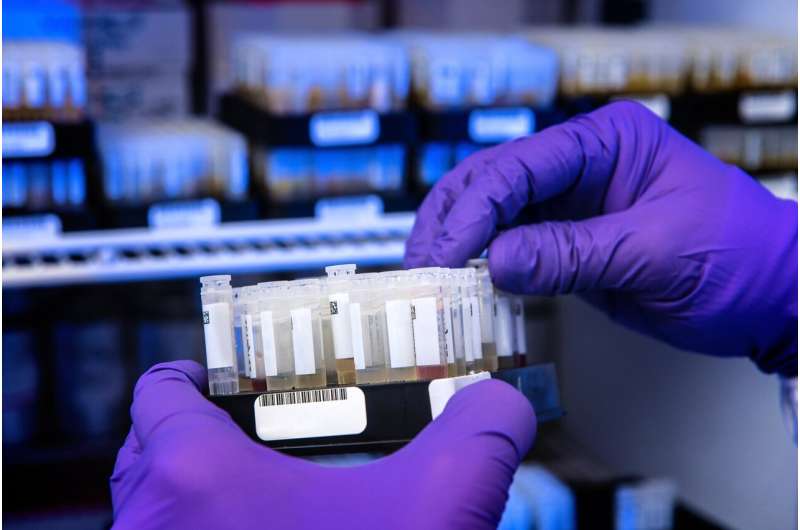
December 2021 marked the one-year anniversary of the first vaccine shots against SARS-CoV-2 administered outside of clinical trials. “When the vaccines were introduced, it was a game changer for our research efforts as well,” says Dr. Rony Dahan from the Weizmann Institute of Science’s Immunology Department. For Dahan, who was already in the midst of studying the antibodies produced in individuals infected with SARS-CoV-2, the newly launched vaccinations presented a research opportunity: to study the effects of immunization on two levels—when it occurs naturally, following exposure to the virus, and when elicited by a vaccine.
During the process of immunization, whether natural or elicited, the immune system studies any foreign entity it encounters and prepares a made-to-order response to fend it off. This response consists primarily of antibodies—small prong-shaped proteins mass-produced by specialized cells of the immune system. Antibodies can act as both neutralizing agents, designed to take down invaders, and expert “taggers,” labeling infected and damaged cells so as to activate the immune response and clear them out.
When COVID-19 appeared, Dahan, whose main area of research is cancer-related immunity and immunotherapy, put the expertise developed in his lab to use to better understand the interplay between the newly discovered virus and the immune system. He was particularly interested in characterizing which types of antibodies are produced in response to SARS-CoV-2.
Dahan and his team, led by Associate Staff Scientist Dr. Tali Feferman and Dr. Inbal Farkash, an internal medicine physician and now also a doctoral student, began by studying the antibodies isolated from blood samples of those who had recovered from COVID-19 or were at diverse active stages of the disease. Several months later, when vaccinations were introduced nationwide, they established a second study group of people who had not yet fallen ill with COVID-19 at the time of the study’s initiation. These participants received two doses of the Pfizer-BioNTech messenger RNA vaccine, following the standard vaccination protocol. The antibodies obtained from the inoculated individuals were then analyzed twice: at two weeks after the first shot—early during the antibody response, when antibodies can first be detected in the blood—and again at two weeks after the second shot, when the antibodies reach their peak levels. Owing to the wide age range of the participants included in the second group—adults aged 24 to 94—the research team could also look into how age might affect the antibody response.
In accordance with the national guidelines for vaccination at the time (end of December 2020), the older participants, aged 60 or more, were the first to enroll in the study. “We sent out an email to the Weizmann community, calling for eligible participants to join the study,” says Feferman, “and found ourselves quickly overflowing with responses from both present and retired Weizmann investigators and employees. The retirees were eager to once again make their contribution to science. It was truly remarkable.”
While most studies of the antibody response to COVID-19 messenger RNA vaccines, conducted by scientists around the world, have mainly addressed the neutralizing effect of antibodies against the virus, Dahan and his team decided to approach the topic from a different angle: They focused on the role of antibodies as the mediators of communication with other elements of the immune response. This communication occurs through a portion of the antibody known as the Fc domain, located at its “tail.” Some types of immune cells are able to read molecular “labels” that are added to this region and interpret them as instructions for what their next step should be. For example, different combinations of small sugar molecules and their patterns of placement along the “tail’s” length will engage different cell types and shape the outcome of their communication.
The researchers found that the fingerprint of antiviral antibodies differed between mild and severe COVID-19 patients, and between recovering and vaccinated individuals. Not only were different types of antibodies produced in each group, but the antibodies varied in how they performed some of their functions. Moreover, distinct sugarcoating patterns graced the tails of the antibodies in each group, which also contributed to the variety of tasks they were able to perform. Overall, the different features of the tail domain, both structural and functional, seemed to affect the quantity, quality and mode of protection achieved by vaccination, as compared to natural immunization.
The researchers also discovered that different age groups respond differently to the vaccine. For example, the antibodies generated in participants over 60 demonstrated less neutralizing activity than the antibodies generated in the younger age group; their characteristic sugarcoating pattern, however, suggests that the immune system of older individuals is able to compensate for that by better recruitment of cells that promote immunization. “We were thus able to point out the distinct checks and balances that the immune system employs to mount an effective response in different age groups,” says Dahan.
Perhaps most important, the researchers were able to identify distinct antiviral antibodies in the vaccinated group that were embellished by patterns of sugar molecules that differed significantly from those of the recovering or active COVID-19 patients. The result is an increased capacity of the antibodies to engage other immune cells and, consequently, more efficient immunization. “Our findings show that the messenger RNA vaccines provide good protection against COVID-19 since, at the very least, the antibodies they elicit, compared to those found in recovering or active patients, indicate robust immunization,” concludes Dahan.
This study paves the way toward a deeper understanding of how vaccination with the new messenger RNA technology induces immunity, particularly in the case of infection with SARS-CoV-2. The data presented could be taken into account in the future for better treatment and vaccine design.
Source: Read Full Article